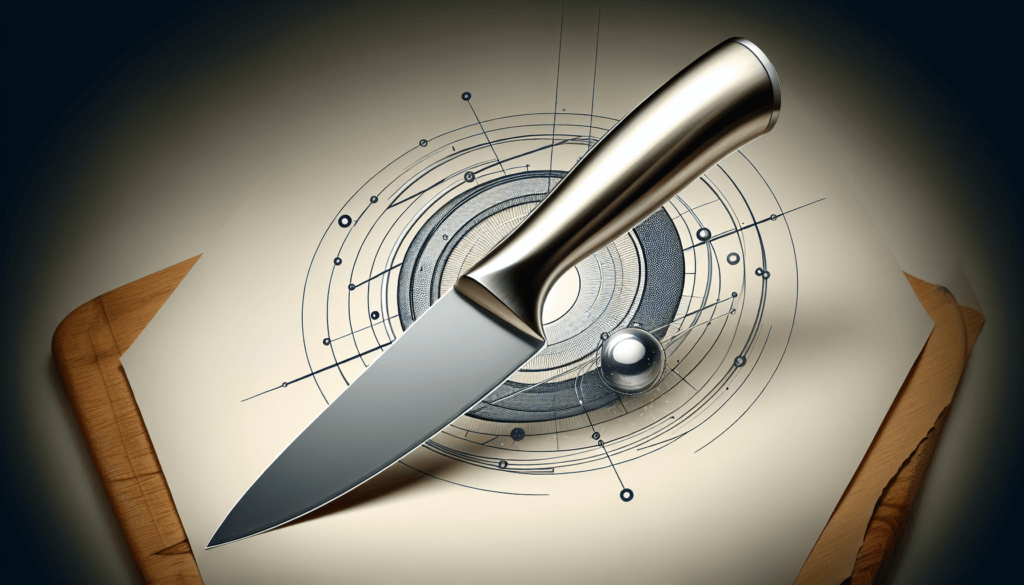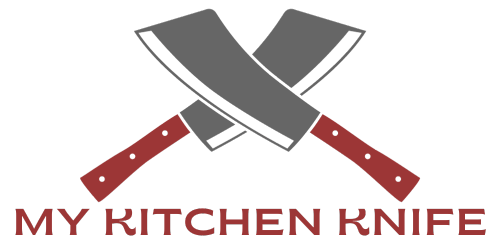Imagine stepping into a professional kitchen, surrounded by cutting boards, sizzling pans, and talented chefs in action. As you watch in awe, you can’t help but wonder about the secret behind their seemingly effortless slicing and dicing. The answer lies in finding the right weight and balance in a kitchen knife. In this article, we will explore how the weight and balance of a knife can make all the difference in your cooking experience, allowing you to slice through ingredients with precision and ease. So, whether you’re a seasoned chef or a home cook looking to elevate your culinary skills, understanding the importance of weight and balance in a kitchen knife is a crucial step towards mastering the art of cooking.

Importance of Weight and Balance in a Kitchen Knife
Achieving Precision and Control
When it comes to cooking, precision and control are key. A well-balanced kitchen knife allows you to have better control over your cuts, giving you the ability to slice, dice, and chop with precision. A knife with the right weight and balance will feel comfortable in your hand, allowing for smooth and accurate movements while cutting. This level of control is essential for achieving consistent and even results in your culinary creations.
Reducing Fatigue and Strain
Extended periods of cooking can put strain on your hands and wrists, but the weight and balance of your kitchen knife can make a significant difference in reducing fatigue. A knife that is too heavy can quickly lead to muscle fatigue, making it difficult to maintain accuracy and control. On the other hand, a knife that is too light may require more effort to perform precision cuts, resulting in unnecessary strain. By finding the right weight and balance, you can ensure that your knife feels balanced and comfortable in your hand, minimizing fatigue and allowing you to cook effortlessly for longer periods.
Improving Safety and Stability
Safety should always be a priority in the kitchen, and the weight and balance of your knife play a crucial role in maintaining a safe cooking environment. A well-balanced knife enhances stability, reducing the risk of accidents. When a knife is properly balanced, it is less likely to tip over or wobble during use, making it safer to maneuver. Additionally, a balanced knife allows for better control, avoiding slips and reducing the chances of accidental cuts. By prioritizing the weight and balance of your kitchen knife, you are ensuring a safer cooking experience.
Considerations when Choosing a Kitchen Knife
Knife Type
There are various types of kitchen knives available, each serving a different purpose. It’s essential to consider the specific tasks you will be performing in the kitchen to choose the appropriate knife type. Different knives have different weight distributions and balance points, so understanding their purpose will help you find the right weight and balance for your needs.
Blade Material
The material of the blade not only affects its durability but also its weight and balance. Different materials, such as stainless steel or carbon steel, offer varying degrees of hardness, sharpness, and weight. While heavier blades may provide more stability, lighter blades offer greater agility. Consider the type of food you frequently work with and your cutting style to choose the blade material that best suits your needs.
Handle Design
While often overlooked, the design of the handle can significantly impact the overall weight and balance of a kitchen knife. Handles come in different shapes, sizes, and materials, all of which can affect the balance and comfort of the knife. Some handles are made from lightweight materials like plastic or nylon, while others are crafted from more hefty materials like wood or stainless steel. Take the time to hold and grip different knives to find a handle design that feels comfortable and well-balanced in your hand.
Blade Length
The length of the blade is another important factor to consider when determining the weight and balance of a kitchen knife. A longer blade may provide more leverage and stability for certain tasks, such as slicing through large cuts of meat. However, a longer blade can also become unwieldy and tip-heavy if not properly balanced. Conversely, a shorter blade may offer better maneuverability for intricate tasks like peeling and trimming. Consider the types of cutting tasks you typically perform and choose a blade length that suits your needs and preferences.

Determining the Ideal Weight and Balance
Finding Your Grip
Before determining the weight and balance of a kitchen knife, it’s crucial to find a grip that feels comfortable and secure in your hand. Everyone has a slightly different way of holding a knife, whether it’s a pinch grip, a handle grip, or something in between. Experiment with various grips to find the one that feels most natural and allows you to maintain control and precision while cutting.
Identifying the Right Weight
The weight of a kitchen knife is a personal preference, but there are some general considerations to keep in mind. If you frequently perform heavy-duty tasks like breaking down large cuts of meat or squash, a slightly heavier knife may provide the necessary power and stability. However, for tasks that require more agility and precision, such as slicing vegetables or filleting fish, a lighter knife may be more suitable. Consider your cooking style, the types of food you prepare, and your physical strength when determining the ideal weight for your needs.
Balancing the Knife
A well-balanced knife feels comfortable and stable in your hand. To determine the balance point of a knife, place your finger or thumb near the choil, where the blade meets the handle. The knife should balance evenly, neither tipping forward nor backward, but remaining perfectly horizontal. A balanced knife will allow for effortless and controlled movement while cutting, reducing the risk of accidents and strain on your hand and wrist.
Testing and Evaluating Kitchen Knives
Holding and Maneuvering the Knife
When testing a kitchen knife, pay attention to how it feels in your hand as you hold and maneuver it. The knife should feel comfortable, providing a secure grip without excessive strain. Ensure that the handle is the right size for your hand, and that it does not create any discomfort or slips during use. Consider the ergonomics of the handle design and how it fits naturally in your hand.
Chopping and Slicing Performance
Put the knife to the test by chopping and slicing different ingredients. Pay attention to how easily the knife glides through the food, as well as the consistency and precision of your cuts. A well-balanced knife will allow for effortless cutting, minimizing the effort required to achieve clean, even slices. Evaluate the knife’s performance on both softer and firmer textures to ensure its versatility and suitability for all your cooking needs.
Comfort and Handling
Consider how comfortable the knife feels during extended use. Is the handle comfortable to grip? Does the knife feel well-balanced throughout the entire cutting process, or does it become top-heavy or bottom-heavy? Comfort is key to reducing fatigue and ensuring a pleasant cooking experience.
Stability and Balance
Evaluate the stability and balance of the knife during use. A well-balanced knife should feel stable in your hand, with minimal wobbling or tip-heavy tendencies. A knife that consistently feels secure and stable will not only improve your safety but also make your cutting tasks more efficient and enjoyable.

Tips for Finding the Right Weight and Balance
Try Before You Buy
When searching for the perfect kitchen knife, it’s always best to try before you buy. Visit a store that specializes in kitchenware and request permission to hold and test different knives. This hands-on approach allows you to experience firsthand how the weight and balance of each knife feels in your hand. This way, you can make an informed decision based on your personal preferences and needs.
Consider Your Cutting Techniques
Take into consideration the cutting techniques you frequently use in the kitchen. If you primarily slice or chop, a well-balanced knife with a lighter weight may be more suitable. However, if you frequently perform heavy-duty tasks that require more force, a slightly heavier knife may be better suited to those needs. By considering your cutting techniques, you can choose a knife that complements your cooking style and tasks.
Experiment With Different Weights and Handle Designs
Don’t be afraid to experiment with different weights and handle designs. What may work for one person might not work for another. By trying out different options, you can find the weight and balance that best suits your preferences and cooking style. Consider borrowing knives from friends or family members or attending cooking classes that provide different knives to gain a better understanding of what works best for you.
Maintenance and Care for a Balanced Knife
Regular Honing and Sharpening
To maintain the performance and balance of a kitchen knife, regular honing and sharpening are essential. Honing, which involves running the blade against a honing steel or ceramic rod, helps to realign the edge and keep it sharp. Sharpening, on the other hand, involves removing a small amount of metal from the blade to create a new edge. By regularly honing and sharpening your knife, you can ensure that it continues to deliver optimal performance and maintain its balance.
Proper Storage
Proper storage also plays a role in maintaining the balance of your knife. Avoid tossing your knife into a drawer with other utensils, as this can cause the blade to become dull and the knife to become unbalanced due to accidental knocking against hard surfaces. Instead, invest in a knife block, magnetic strip, or knife sheaths to safely store your knife and protect its balance.
Cleaning and Drying
After each use, it’s essential to properly clean and dry your knife. Hand washing with warm soapy water and gentle scrubbing is typically sufficient for most kitchen knives. Avoid using abrasive scrubbers or harsh chemicals that can damage the integrity of the blade or handle. After washing, thoroughly dry the knife to prevent any moisture buildup that could lead to rust or corrosion. By taking proper care of your knife, you can maintain its balance and extend its lifespan.
Finding the right weight and balance in a kitchen knife is crucial for achieving precision, reducing fatigue, improving safety, and enhancing your overall cooking experience. By considering the knife type, blade material, handle design, and blade length, you can make an informed decision and find a knife that truly feels like an extension of your hand. Remember to test and evaluate different knives, consider your cutting techniques, and properly maintain your knife through regular honing, sharpening, and proper storage. With the right weight and balance, your kitchen knife will become your trusted companion in the culinary world. Happy cooking!



